
Here’s an unfortunate scenario. You’re sliding down a visual approach at dusk with the speed nailed, the wind calm and bright LEDs lighting up the pavement. You settle into the flare and hit hard enough to bounce back in the air where the oscillations begin. Despite your thousands of flight hours, your insurer isn’t impressed with the resulting crunch of the propeller and broken landing gear.
When was the last time you had your eyes checked—beyond testing your memory of the eye chart? For a lot of us, the limitation on the back of the medical certificate saying to wear corrective lenses is also a reminder to keep tabs on eye health. We admit to falling behind, too. Worse is that plain-vanilla FAA medical exams might give a false sense of security when it comes to the real health of aging eyes.
So for a deeper if not depressing look into our deteriorating eyesight, and how eye health and glasses affect our performance behind the controls, we spent some time with Dr. Paul Proske, a pilot and staff optometrist at the VisionPro eye clinic in Spring, Texas. And then we scheduled an eye exam.
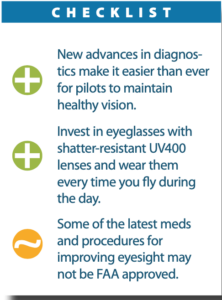
A PILOT’S EYES
As expected, Dr. Proske, who flies a Piper Cherokee, agreed that at least some (maybe a lot) of the head-scratching runway prangs we consistently read about in the NTSB reports may have been avoided if the pilots were wearing the correct prescription lenses or contacts. After all, an astonishing half of the human brain is devoted to vision and visual processing.
More fascinating is that all the information has to pass through an optic nerve with a diameter that’s about the size of a ballpoint pen. As Proske put it, whether we’re nine minutes or 90 years old, we simply “just see” without any conscious effort. Most of the time, anyway. For pilots, it’s mostly about protecting the eyes from sun exposure and UV light.
Consider that pilots flying for an hour at 30,000 feet are subjected to the same cancer-causing UV radiation as sitting in a tanning bed for 20 minutes. Think about that the next time you marvel at the view outside the windscreen of your turboprop or jet. Still, you don’t have be up high to be at risk. How many times have your eyes been exposed for long periods without wearing good sunglasses? After a while the abuse takes a toll. The damage isn’t pretty.
UV exposure increases the chances of developing cataracts, which can lead to blurry vision, double vision, trouble seeing at night and worst case, blindness. Diabetes, tobacco smoke and alcohol up the risk factor. None of those symptoms of failing eyes are any good to pilots, and for the most part, the basic exam that’s part of a routine FAA medical certification won’t catch many of the things that an optometrist looks for during a thorough eye exam. Growths and cancers in the eye are also major concerns addressed during a real eye screening.
Proske pointed out that while many pilots wear sunglasses, it’s more than looking cool. Some generic sunglasses may not protect you from the damaging UV-A that’s not blocked by ozone. Plus, sunglasses decrease the overall light getting to the eyes, which dilates the pupil—actually letting even more harmful light into the eyes. Ask your eye doctor for a recommendation. We can easily recommend top brands, including Flying Eyes, Ray Ban and Oakley, to name a few. But use caution with polarized lenses. They may work great for cycling and snowboarding, but they aren’t compatible with some avionics displays.
THE GEEZER FACTOR
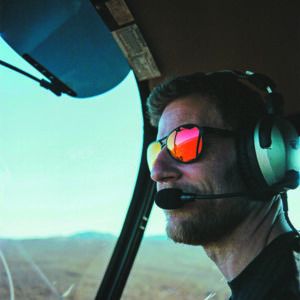
With insurers looking at aging pilots with their own eyes wide open, there are plenty of age-related vision issues to be concerned with. And while aging pilots suffer (to different degrees) from cognitive decline, Proske said there is plenty we can do to keep the vision performance optimal. Start by avoiding cataracts—something the human eye mostly does on its own. The crystalline lens behind the pupil is a great absorber of UV light, which is great for protecting the retina from UV rays.
Unfortunately, as a result of UV and age, the human lenses cloud over, causing cataracts. For FAA medical standards (pilots and air traffic controllers), cataracts aren’t disqualifying as long as the applicant meets the distance-vision standards set for the class of medical certificate intended. If not, we’re told surgery with an artificial lens (intraocular) implant may be the best option. Discuss the options with your AME and ophthalmologist thoroughly. In our research, we found that AMAS, or Aviation Medical Advisory Service (www.aviationmedicine.com), has advice and decent discussion for surgical options and reporting responsibilities for this and other eye conditions.
Presbyopia, or the stiffening of the lens (and pilots holding the checklist farther away to see it), sometimes marks the start of declining vision at that magic age of 40. And since pilots have different near-vision requirements than the average person, Proske suggests measuring the distance from the face to the instrument panel in the airplane they fly the most. It’s a good way to get a corrective lens prescription that suits the best distance for cockpit chores.
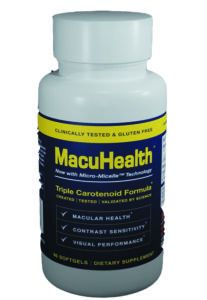
Another issue is macular health. The macula is the location on the retina that’s responsible for our sharpest central (straight ahead) vision. Three pigments—Lutein, Zeaxanthin and Meso-Zeaxanthin—are antioxidants and important for crisp vision and fighting off cancer. MacuHealth is one over-the-counter dietary supplement containing all three of the pigments, and has been clinically tested to improve visually acuity when taken as directed.
THE AIR UP THERE
The nostrils aren’t the only things that suffer the consequences of dry cabins. Consider that the humidity in a pressurized cabin may be 12 percent or lower, and the air in non-pressurized cabins at just a few thousand feet can be much lower than it is on the ground. That means dry, irritated and watery eyes. If you wear soft contact lenses (which use even more of the water in tears) while flying your eyes could be in even worse shape—especially if they’re glued to smartphones and tablets as most of us are.
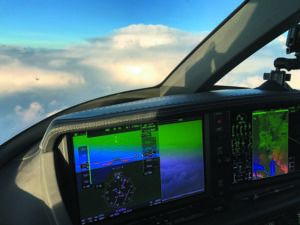
Proske reiterated a point we already knew, but don’t do much to change, and that’s spending huge amounts of time on our devices. Americans are spending as much as 10 hours per day on them, according to studies, and it’s not doing much to preserve vision health.
“Our eyes just weren’t built to constantly be on electronic media, which massively stresses vision,” he said. He noted that these devices are causing a massive spike in dry eyes among patients in his clinic. Using the devices in the evening before sleep can cause the body to make less melatonin, thus interrupting the circadian rhythm.
Like most clinicians, Proske suggests putting the devices away at least one hour before bedtime, and simply back off on their use during the day. It’s easier said than done, but if you must, the old standby for dry eyes has been artificial tears, but the remedy may only last a matter of minutes. For piloting chores, we can attest that dry eyes can be a serious issue. Burning, tearing and the inability keep the eyes open are a real distraction, so it may be worth a try. There are also oral meds, including the Hydroeye product. Docs may also recommend warm compresses and lid scrubs to get your natural tears moving. Some prescribed meds include Restasis and Xiidra.
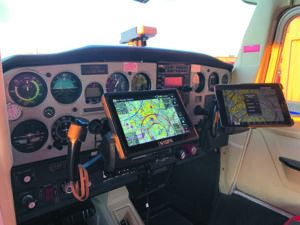
There is now the prescription-based Tyrvaya nasal spray for dry eyes, but since the formulation was FDA approved less than a year ago, pilots can’t use it until it’s cleared by the FAA. On the other hand, the med has varenicline—the same active ingredient as Chantix, which is the drug used for nicotine addiction. It’s on the list of FAA-prohibited drugs, so whether it will be approved is anyone’s guess.
SURGERY, LENSES AND NEW ADVANCEMENTS
Pilots wearing contact lenses may battle eye issues in the cockpit and for them it’s good news that soft contact lenses have seen sizable improvements of late, including less drying of the eyes. “If your soft lenses dry out, a good option is the new Scleral Lens. I personally wear these when flying and driving at night,” Proske suggested. Ask your own eye doc for suggestions, based on your vision.
Corrective LASIK surgery is still a pretty popular procedure, even among pilots, and now there is another surgery called Clear Lensectomy. It’s essentially the same as cataract surgery, but without the cataracts. The surgeon replaces the eye’s natural lenses with an artificial lens of virtually any strength. For some it may be advantageous because it doesn’t rely on corneal thickness, which could disqualify a patient from LASIK procedures. Better yet, it can be used to correct both near and distance vision.
One non-surgical method of vision correction is called OrthoK. With this, the patient wears a specially shaped contact lens while sleeping, and removes the lens at wake-up where vision remains clear for the remainder of the day. This technique was actually discovered in the 1940s, but Proske said it was only recently that the lens technology made it safe and effective.
There is also the new eyedrop Vuity, with pilocarpine. It’s intended to decrease the need for reading glasses, but since it’s less than one year old, the flying community is in a holding pattern to see if it’s eventually approved by the FAA.
Last, Proske said there have been good advancements in eye health screening techniques and diagnostics, including OCT for Optical Coherence Tomography. This enables viewing the retina and other eye structures at almost the cellular level, which is analogous to an MRI image. It takes just a couple of seconds to get a scan and is absolutely painless. “This lets us distinguish different retinal pathologies, and is a part of current glaucoma management,” he told us.
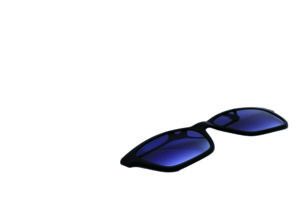
Since 2013, Flying Eyes Optics has been offering its unique line of headset-friendly sunglasses, and now it has expanded the line to include everyday ophthalmic glasses. The decision is telling of the pilot population, because Flying Eyes said there has been an overwhelming demand for prescription glasses among aviators, even though the entire line of Flying Eyes frames support prescription lenses. Aviators aside, the company said that roughly 75 percent of adults need some sort of vision correction, and roughly 11 percent wear contact lenses.
The initial launch of the opthalmics line incudes four styles—the Noctua, Athene, Luzon and Otus. The pilot in the main image is wearing the $490 Otus fitted with a magnetic clip-on sunglass, available in sold or gradient grey. Like all Flying Eyes models, the new line has the Resilamide frame made from advanced polymers. The frames offer a 20 percent weight savings over non-polymer ones.
The new ophthalmic line follows the lead of the company’s aviator sunglasses and are headset and flight helmet friendly, sporting flexible 1 mm-thin temples to reduce clamping pressure pain. They’re nearly indestructible. I twisted, pulled and bent the temples on my Otus sample and they survived. Far from inexpensive, I’ve always liked that the Flying Eyes were versatile for use outside of the cockpit. Early on, I invested in the company’s original model—the Hawk—with convertible temples and headstrap, plus I added my prescription lenses, and the glasses have been serving hard duty for motorcycling, snowboarding and cycling. I tried the Otus under my full-face Shoei motorcycle helmet and they were a good match, as they were under a Bose A20 headset. The temples essentially wrap around the head—not the ears.
Flying Eyes uses a dedicated lens lab that specializes in a wide variety of prescriptions, or you can have your script fitted on your own (likely cheaper and quicker). The solid-gray transition lenses are the good-performing XTRActive tech, and for me they adapt seamlessly, offering the exact amount of tint for the cockpit ambient lighting conditions. Visit www.flyingeyesoptics.com, where there’s a good sizing utility and buying guide. —Larry Anglisano
DON’T SKIMP
That’s a good plan when it comes to sourcing eyeglasses for flying, and when it comes to taking command of your eye health. In talking with Dr. Proske it’s clear that there are plenty of clinical advances that pilots can take advantage of, no matter the level of eyesight deterioration. It may not always be possible, but for pilots facing medical disqualification because of deteriorating eyesight, we suggest finding an eye doc who is a pilot.
As for sourcing sunglasses for flying—especially for cockpits decked out with the latest electronic displays, large and small—make an educated decision. Dean Siracusa at Flying Eyes Optics had some valuable advice.
“No matter what brand of eyeglasses you buy, make certain that they are non-polarized (they don’t work we’ll with many LCD displays and they can hinder the ability to spot traffic),” he stressed. He also said to look for the important label somewhere on the glasses that says “UV400.” That is a standard that high-quality eyewear makers adhere to, and is better than the minimum standards set by the FDA. Best case is blocking 100 percent of UV light. Additionally, you want glasses that have impact-resistant lenses. While glass lenses (and some plastic ones, too) may have good clarity, you don’t want them on your face during a bird strike that comes through the windscreen.
Some of the best lenses available these days are polycarbonate—which are impact-resistant—and for prescription lenses you want trivex. These offer impressive clarity with the impact-resistance qualities of polycarbonate.
Another option, if you just need readers in the cockpit, is Flying Eyes non-prescription readers (which it manufacturers in-house) available in different strengths, from 1.5 to 2.5 diopters. We sampled these while researching this article and found them to be extremely effective, especially for viewing a small iPad. The placement of the magnification on the lenses is specially designed for pilots so they can still see the instrument panel without shifting the head.
See a video on eye care for pilots at http://tinyurl.com/j95ht2a.
Our thanks to Dr. Paul Proske at Vision Pro Eye Care (www.visionproeyecare.com) in Spring, Texas, for helping with our research for this report.

